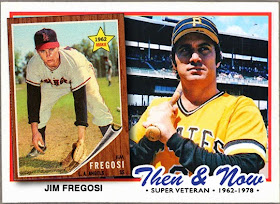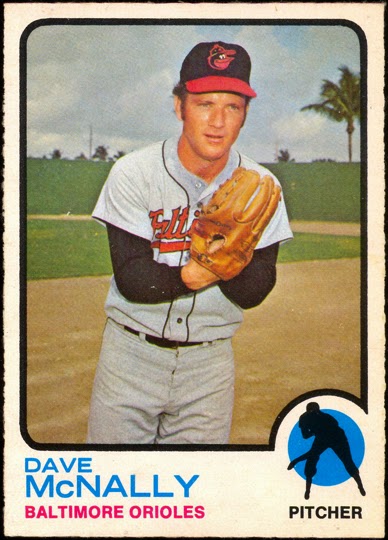Well, another hundred posts have gone by and I find myself at #600 for the blog!
Thank you all for reading this far. It's been a blast and I hope to keep it going for a long while!
So let's dive right in and check out cards numbered "600" through the decade of the 1970's…
1970 Willie Mays
Was never a fan of this card. The boring 1970 template paired up
with a boring photo of the "Say Hey Kid" has always made this one of my
least favorite Willie Mays cards.
What a shame, but then again the 1970 was a bit on the boring side anyway.
Nevertheless, it's Willie Mays, beyond super-star, beyond legend…
1971 Willie Mays
Well what do you know, two years in a row for Mays!
Nice card of the future Hall of Fame star at the tail end of his career.
The 1971 black-bordered template has always been one of my favorites!
Love this card!
1972 Al Kaline
Great card of the Tigers great!
What a set, and what a nice colorful slab of cardboard showing perhaps the most popular Detroit Tiger player ever!
1973 Dave McNally
The Baltimore star pitcher in the prime of his career. One of the
anchors of that Baltimore pitching staff also featuring Jim Palmer, Mike
Cuellar, etc.
184 lifetime wins, 3.24 E.R.A., and a .607 winning percentage, and the winner of 20+ four years in a row between 1968 and 1971.
1974 Rookie Outfielders (Bill Madlock)
If not for Madlock, a forgettable card if there ever was one.
But hey, you have a future four-time batting champ, so it's a keeper for sure!
I'll be designing a "dedicated rookie card" for Madlock in the near future, so keep an eye out for it!
1975 Rod Carew
Great card of the perennial batting champ and future 3000-hit club member!
In the prime of his career, 1975 would be his fourth batting championship in a row, sixth of his career.
For good measure he'd go on to tack on two more in 1977 and 1978.
Another future Hall of Fame star on a beautiful piece of cardboard!
1976 Tom Seaver
I have always loved this card. I don't know why since it doesn't
have a great action shot, but I've always been a fan of the 1976 set
design, and it's "Tom Terrific" in the prime of his career.
Another future Hall of Fame player, winner of 311 games, and over 3600 career strikeouts.
One of those "legends beyond legends"! I was lucky enough to be at
his 300th win at Yankee Stadium (Phil Rizzuto Day) in 1985. Will never
forget it!
1977 Jim Palmer
Great card of the Orioles Hall of Fame hurler!
Beautiful action shot on the clean 1977 design.
Palmer was just incredible that decade! Eight-times a 20+ game
winner, sub-3.00 earned run average, and six-time all-star in the '70's.
The best pitcher in the American League for the decade.
1978 Frank Tanana
A pitcher with a very bright future until injuries curtailed his career.
Great set and nice card for the Angels flame-thrower.
Even with his injuries he went on to win 240 games with 2773 strikeouts and 34 shutouts over 21 seasons.
Very underrated career!
1979 George Foster
I have always hated this card! I'm sorry, but the "blank" batting helmet Foster is wearing just annoys the heck out of me!
The reigning home run champ in the National league, former Most
valuable Player in 1977, member of the "Big Red Machine", and yet the
card reeks of "unauthorized" garbage!
Ugh. Lousy way to wrap up the decade and cards numbered 600.
But a nice collection nevertheless!
Six out of ten cards bearing future Hall of Famers isn't bad, right!?
Now onto 700!!!














































